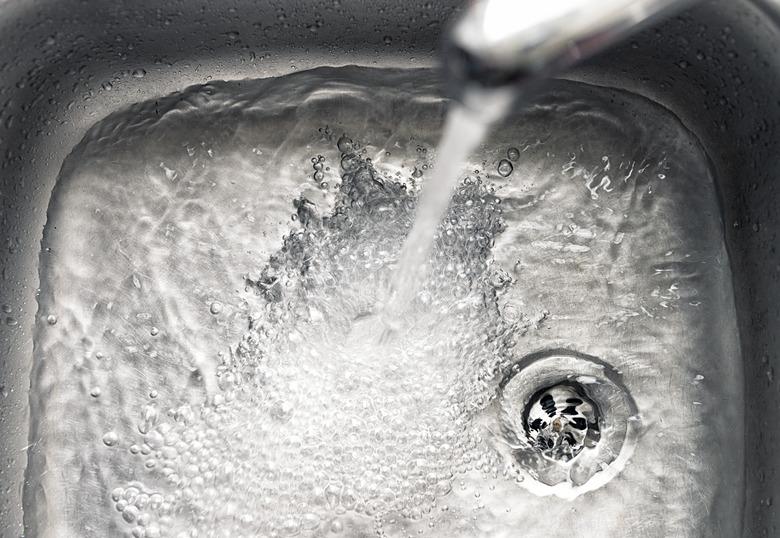Liquid-Plumr Vs. Drano
If there's a drain, clogging is inevitable — it's the natural order of living in a home. Your first attempt at unclogging a drain should always be taking a snake to it, but if that has failed, it's time to look for a liquid drain cleaner. Staring at the shelves, it's difficult to know whether to choose Liquid-Plumr or Drano or another approach entirely.
Enzyme vs. Chemical Cleaners
Enzyme vs. Chemical Cleaners
There are two types of liquid drain cleaners: enzyme and chemical. Enzyme cleaners utilize enzymes and bacteria cultures to break down the organic matter inside the drain, such as mold, mildew, food and hair. They are, however, not ideal for attacking clogged drains and are instead best suited for maintenance.
Chemical cleaners can break down chemical clogs, such as soap scum, as well as most of the organic material that may be clogging your drain. Both Liquid-Plumr and Drano are liquid chemical cleaners. (Drano does also make a liquid enzyme drain cleaner.) These products' chemical formulas give them an advantage over tough clogs as they're able to attack the whole clog. But chemical cleaners can damage your pipes if used incorrectly.
How Drain Cleaners Work
How Drain Cleaners Work
The gel formulas of both products are designed to cut through standing water and break apart the matter clogging the drain. Some Liquid-Plumr and Drano formulas are designed to foam, while others are granules instead of a liquid but operate similarly. (The granules are intended for kitchen use rather than in the bathroom.)
Both Liquid-Plumr and Drano have the same instructions for their liquid formulas. They instruct users to pour the directed amount as described on the bottle down the drain and wait for 15 minutes. If there's standing water remaining after 15 minutes, wait until the water completely drains. Then, flush the drain with hot water.
Important Safety Reminders
Important Safety Reminders
You must never mix any of these liquid cleaners with each other, with toilet cleaners or with any chemical that was recently poured down the drain. The fumes emitted by the chemical reaction can be dangerous.
When using any of these cleaners, pour slowly to avoid splashing and making contact with your skin and eyes. Make sure that the room is well-ventilated as the fumes from these chemicals can be harmful in small confined spaces.
Know Your Drain
Know Your Drain
Not all drains are created equal, so when selecting a liquid drain cleaner, be mindful of which type of drain is clogged. Drains are connected to different types of pipes, which respond differently to certain chemicals. Because of this, prolonged or constant use of liquid chemical cleaners isn't recommended. These cleaners are also not intended for toilets.
Fortunately, manufacturer instructions for both Liquid-Plumr and Drano make it easy to determine which product to use on which drain. In addition to their standard "safe for all pipes" formulas, both brands have a product for the kitchen, garbage disposal and general hair clogs. They also come in varying strengths.
Liquid-Plumr vs. Drano
Liquid-Plumr vs. Drano
Liquid-Plumr
- Active ingredients: sodium hydroxide (lye) and sodium hypochlorite (bleach)
- Works quickly
- May damage old pipes
Drano
- Contains sodium silicate, or "liquid glass," to protect pipes
- Powerful
- Easy to use
Overall, there isn't a big difference between Liquid-Plumr and Drano. Both make products for the kitchen, garbage disposal and bathroom. Liquid-Plumr, however, features additions like PipeGuard to its formula, whereas Drano features more niche products, such as Drano Advanced Septic Treatment. At the end of the day, what you choose depends on the type of drain you have and what's clogging it.
